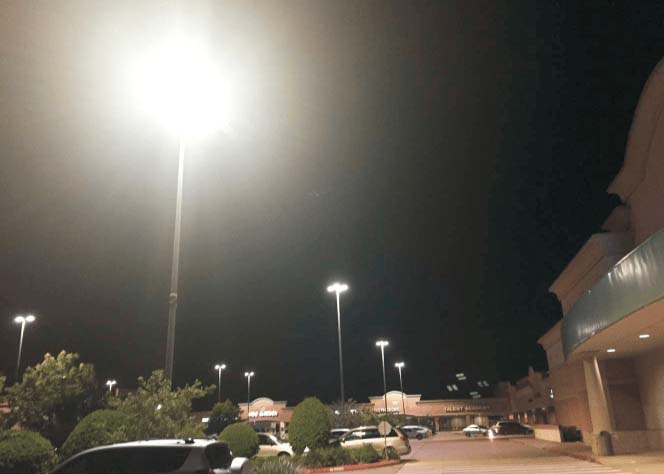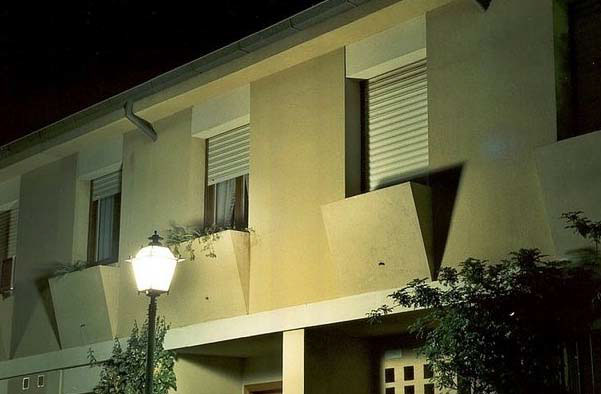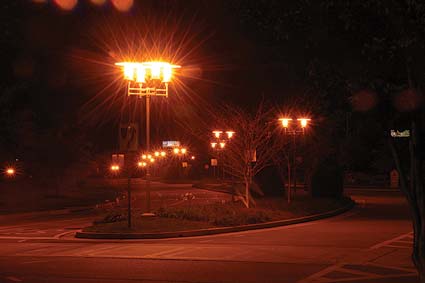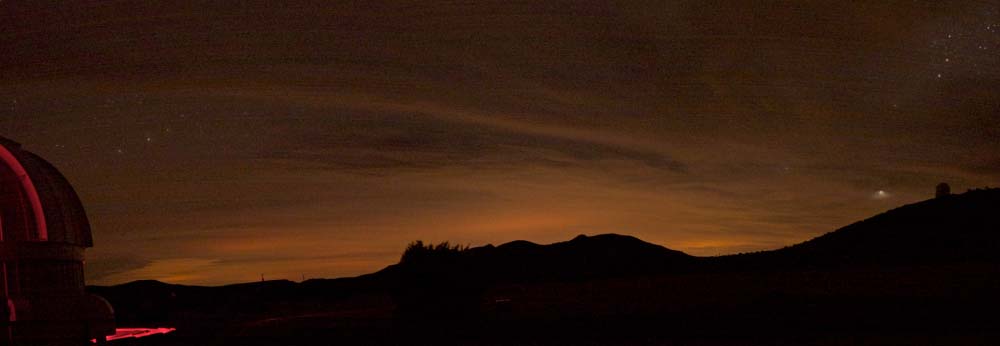What Is Light Pollution?
Most of us think of light pollution as the inability to see the stars from within a city but it includes other things such as glare on roadways at night, or unwelcome light from a neighbor’s porch light falling into a bedroom window making it difficult to sleep. These are all aspects of light pollution that are related to legitimate uses of light at night, but create consequences that are unintended and usually considered to be intrusive.
The DarkSky International, the leading non-profit organization dedicated to preserving night skies, defines light pollution as, “any adverse or unintended effect of the use of artificial light at night, including sky glow, glare, light trespass, light clutter, decreased visibility at night, and energy waste.” Today light pollution is a growing, global issue and results from poor lighting design and simple over use.1
Forms of Light Pollution

Glare
Intense and blinding light that reduces visibility and causes visual discomfort.

Light Trespass
When light falls where it is not wanted of needed.

Clutter
Excessive groupings of light sources that are bright and confusing.

Skyglow
The brightening of the night sky over inhabited areas.
Impacts of Light Pollution
Using excessive artificial light at night (ALAN) can have a negative impact on human health, the natural environment, and even the economy.
Human Health Impacts
Light pollution impacts the production of melatonin, a hormone that is produced once the sun goes down and which helps keep our circadian rhythms in balance. Decreased melatonin production has been linked to increased rates of diabetes, obesity, breast and prostate cancer. Artificial light at night can also disrupt human circadian rhythms or the “sleep cycle” and increase exhaustion and irritability. Prolonged exposure to intense light glare can damage human vision and contribute to sight loss or impairment, especially for the elderly.
Natural Environment Impacts
Humans are not the only ones who are adversely affected by light pollution. Wildlife and other organisms use natural light as both a resource and a source of information about their environment.2 Artificial light disrupts these natural processes and cues in both plants and animals. Prolonged exposure to artificial lighting prevents trees from adjusting to changing seasons and can alter behaviors, foraging areas, and breeding cycles for insects, turtles, birds, fish, reptiles and other wildlife species.3 Ecosystems are complex networks of interacting organisms; when one species is disturbed by light pollution, the chain of an entire habitat can be harmed.
Examples of the Impact of ALAN on Wildlife
-
Most birds migrate or hunt during night time hours; therefore, outdoor lighting can confuse birds, potentially drawing them into urban environments where there is increased danger of colliding with objects or buildings with reflective windows.
-
When sea turtles hatch they instinctively crawl from the beach towards the reflection of the moon, leading them back to the ocean. Excessive use of light, especially along beach promenades, can confuse baby turtles and lead them away from the ocean thus putting them at risk of becoming prey to other animals.
-
Many animals, especially predators, have adapted to naturally camouflage under cover of darkness making it easier to hunt at night. Light pollution increases visibility of predators to prey, making hunting more difficult and disrupting natural predator/prey relationships.
-
Thousands of species, both predator and prey, are nocturnal. Being exposed to ALAN can disrupt their natural circadian rhythms and alter behaviors, foraging areas, and breeding cycles.
-
Insects are often drawn to light sources and can become “trapped” as they hover around a light source until they are exhausted and die. Certain kinds of light fixtures can also be dangerous to insects when they become stuck within the fixture and die from heat exposure.
Economic Impacts
Globally, outdoor lighting makes up approximately eight percent of global energy use with about 60 percent of that wasted as unneeded, overlit or poorly aimed lighting.1 In the United States, approximately one-third of all lighting is wasted, and estimates suggest that nearly $7 billion dollars of energy is wasted as light pollution annually.4 For every $100 spent operating a dusk-to-dawn light fixture, $45 is wasted on light that never reaches the ground.5
Cities are now realizing the benefits of eliminating energy waste due to light pollution through higher-quality, better-designed lighting. Today there are many energy efficient lighting alternatives that, when combined with proper design, can significantly reduce energy costs.
Notes
-
Bryson et al. (2014) Planning for Dark Skies: Lighting Ordinances in the Intermountain West. Weber State University. pp. 213-223.
-
Gaston, K. J., Bennie, J., Davies, T. W. and Hopkins, J. (2013), The ecological impacts of nighttime light pollution: a mechanistic appraisal. Biol Rev, 88: 912- 927. Doi: 10.1111/brv.12036. Retrieved from: http://onlinelibrary.wiley.com/doi/10.1111/brv.12036/full
-
Chepesiuk R. Missing the Dark: Health Effects of Light Pollution. Environmental Health Perspectives. 2009;117(1):A20-A27.
-
Gallaway, Olsen, and Mitchell. (2010). The economics of global light pollution. Missouri State University. Ecological Economics 69: 658-665.
-
City of Ketchum. Dark Sky Educational Pamphlet. June 2001.

